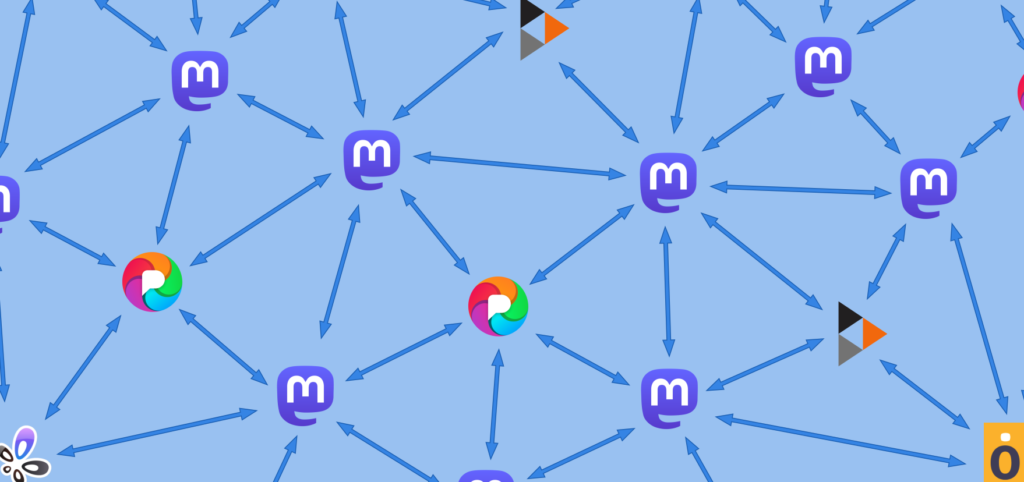
If you call someone on an ordinary phone, your phone provider will connect to the phone provider of the person you’re calling. You don’t need to be on the same provider to call someone. This works worldwide and seamlessly, because all the hundreds of phone providers in the world talk to each other. From the user’s point of view, it’s as if all phones in the world are on the same network.
The Fediverse (or “Fedi”) is basically the same idea, but for social media. The Fediverse is a collection of thousands of independent social media servers that talk to each other seamlessly. This means that the millions of users on these servers can interact with each other as if they were on a single social network. The most popular type of Fedi server at the moment is called Mastodon (or “Masto”) and works a bit like a calmer, more friendly version of Twitter.
There are many kinds of Fediverse servers, often with a specific purpose such as photo sharing, video sharing, livestreaming, book clubs etc. Although the various types of servers work very differently, they talk to each other with a common technical standard called ActivityPub. The common standard means people on totally different kinds of servers can follow and interact with each other seamlessly.
In fact, the process of interacting with other servers is so seamless, most people don’t even notice that they are communicating with other servers!
Whoa… is there anywhere I can get more info for beginners about this?
Yes! For example here’s a cute animated video about Mastodon ⧉ that explains the basic principles of a federated social network, or click here for an even simpler explanation video ⧉. You might also want to watch this excellent short film introducing the Fediverse for absolute beginners ⧉, or this animation about the Fediverse ⧉ that emphasises the importance of common technical standards.
Could you give some examples of the Fediverse in action? How do different kinds of servers interact?
Let’s suppose someone has an account on a Mastodon server, which means they have a Twitter-style timeline and features. They can create short posts, follow other people, reply to posts, share posts, like posts etc. That person can follow and interact with accounts from other Mastodon servers, but they can also follow accounts from completely different kinds of Fediverse servers too.
For example, if they follow a video account from PeerTube, videos from the PeerTube account will appear in their Mastodon timeline just like Mastodon posts do. If they reply to one of these video posts in their timeline on Mastodon, that reply will also appear as a comment below that video on PeerTube.
There are many other kinds of server on the Fediverse, such as Pixelfed for photos, BookWyrm for reviewing books, WordPress for writing blogs etc. All of them can be followed and interacted with from Mastodon accounts.
I thought the Fediverse and Mastodon were the same thing? Where does the word “Fediverse” come from?
Mastodon is currently the most popular kind of Fediverse server, but it’s just one kind. There are many other kinds, communicating through a common standard to form a single network. The collective term for this network of compatible servers is “The Fediverse”, which is short for “Federated Universe”.
Who owns Mastodon? Who owns the Fediverse?
No one owns Mastodon or the Fediverse, each server is totally independently owned by whoever set it up. Ownership of the network is spread across thousands of independent server owners.
Why is the Fediverse like this? Why is it spread out on so many servers?
There are lots of important reasons for the Fediverse being spread out like this.
